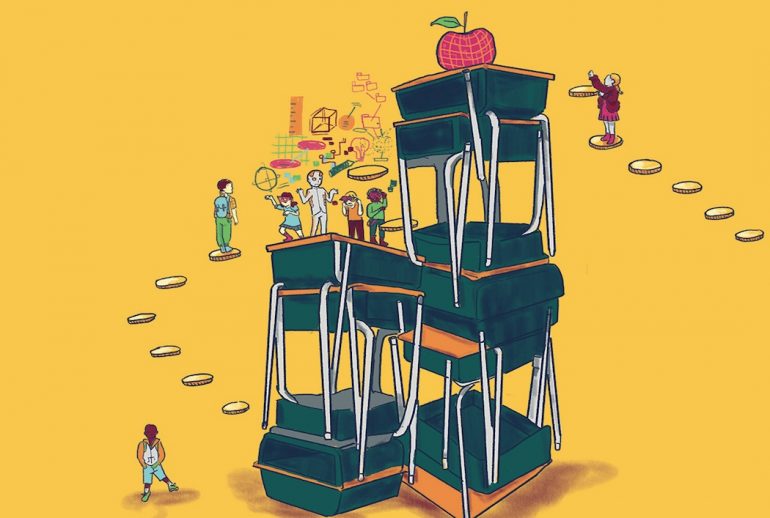Although technological trends are highly likely to disrupt the Canadian workforce over the next decade, these new technologies will most likely be embraced at a gradual and uneven way across the country, according to experts surveyed by the Brookfield Institute for Innovation and Entrepreneurship.
The report is part of Employment 2030, Brookfield Institute’s initiative hoping to predict employment skills that will be highly sought after by the year 2030. The latest report, entitled ‘Signs of the Times,’ investigates how a group of approximately 120 experts across Canada are considering the future of employment, as well as which trends they believe are most likely to incite change. The report offers perspectives on the trends affecting both regional labour markets and Canada as a whole, gathered at workshops in Alberta, Ontario, Yukon, British Columbia, Quebec, and Newfoundland Labrador.
“Each region has different challenges and may need different tools in overcoming them.”
The report found that technological trends like AI disruption were important points of consideration, with participants highlighting both their current and potential impact on the workforce by 2030, in addition to what the report called the “relatively slow rate of technological adoption in Canada.”
“Experts recognize that the pace of adoption is uneven for different parts of the country given our different resources, geographies, needs, and levels of connectivity,” Diana Rivera, an economist at the Brookfield Institute and project lead of Employment in 2030, told BetaKit.
“They also indicated that whether our adoption of various technologies is a net positive or negative depends on whether we prioritize worker inclusion as well as economic growth, and whether we enact flexible measures that help those who may be negatively impacted so that they can adapt, transition, and succeed. Each region has different challenges and may need different tools in overcoming them.”
At the workshops, tech trends were examined in relation to a number of occupations, and barriers to adoption. Aspects of government policy and workers’ rights were often cited alongside trends and barriers in the context of technological disruption. The Institute’s report from earlier this year, entitled ‘Turn and Face the Strange,’ found that the Canadian workforce could face complex forces ranging from automation to digitalization, in a trend the Brookfield Institute called ‘AI Everything.’
RELATED: Retraining for workers could mitigate negative impact of automation
Another key finding from the latest report was that experts expect that environmental sustainability trends, such as resource scarcity, will grow in prominence – likely creating more unexpected change for Canada’s labour market. Resource scarcity, for example, could lead to clean air, water, and sand becoming threatened and incredibly valuable resources by 2030. The report found that participants were clearly mindful of this, as well as other environmental sustainability trends, including wildfires, flooding, mudslides, and alternative energy.
“These trends were connected regularly to occupations such as plastics processing, managers in agriculture, and electrical engineers,” the report said. “For example, some participants felt that forestry occupations may be negatively impacted by wildfires and resource scarcity, but demand could increase given the need to take care of the environment.”
“The importance of the reconciliation process and the safeguarding of Indigenous rights was an important recurring topic.”
The report also found that numerous experts sensed factors related to Indigenous issues were absent from the last study, as well as the workshops.
“The importance of the reconciliation process and the safeguarding of Indigenous rights was an important recurring topic,” the report said. “This arose in discussions around wider societal and national change as Indigenous peoples are an important and growing demographic, as well as in occupation.”
The Brookfield Institute said this divide became more apparent when considering occupations such as court clerks, which experts felt would be influenced by an emergent emphasis on Indigenous dispute resolution. Several experts said that judicial practices related to land and sovereignty issues would change in the next decade, which could potentially impact a number of legal professions.
“We heard from experts that the reconciliation process and the growing importance of both protecting and restoring Indigenous rights will have an effect on the way we view work; from the tasks and areas of focus for specific occupations such as legal occupations, to the composition of our labour market, given that Indigenous populations have the largest growth rate in the country,” Rivera told BetaKit. “We are currently exploring ways to collaborate with partners who are doing work for and with Indigenous people in this space, to complement our study qualitatively.”
Experts were also asked to envision a range of new professions that could exist by the year 2030. Some of the experts’ examples include AI ethicists, VR educators, dark web detectives, digital identity protectors, cannabis sommeliers, and VR doctors.
The next stage of the Employment in 2030 initiative will feed the data from these workshops into a machine-learning algorithm to predict various effects across the labour market and provide a forecast of skills likely to be in-demand in 2030. The results from this phase of work will be publicly available in early 2020.
Illustration by Jesseca Buizon


